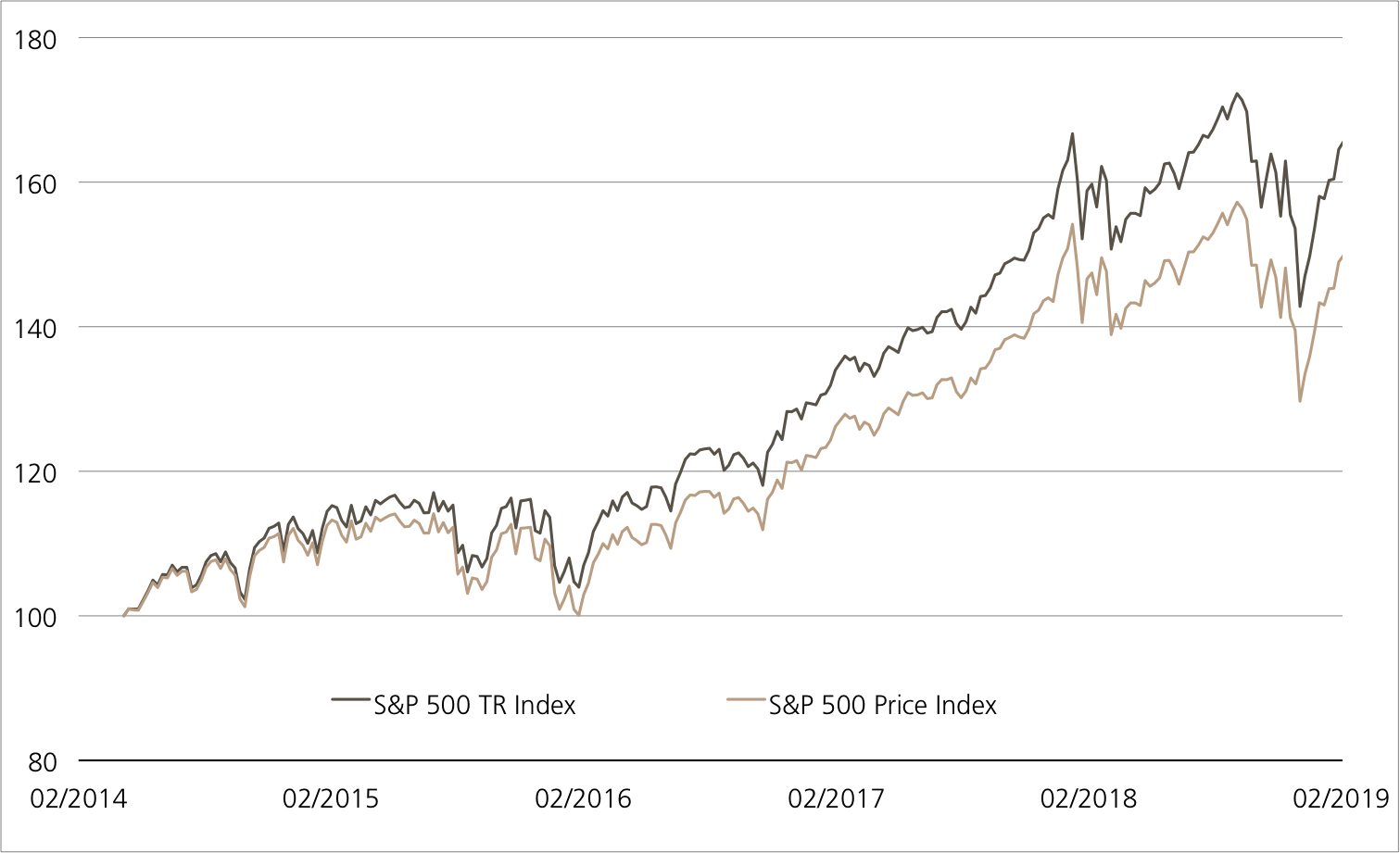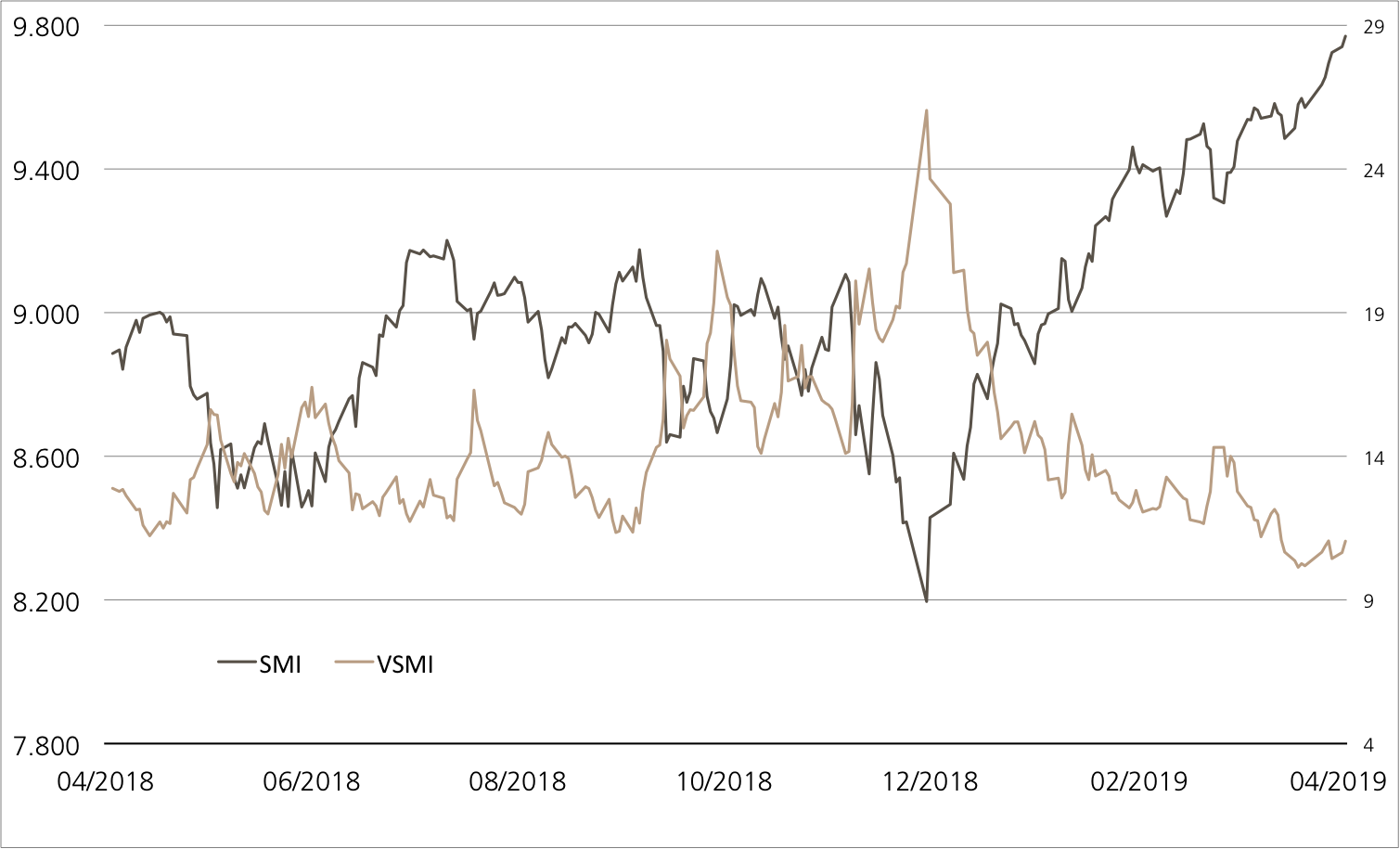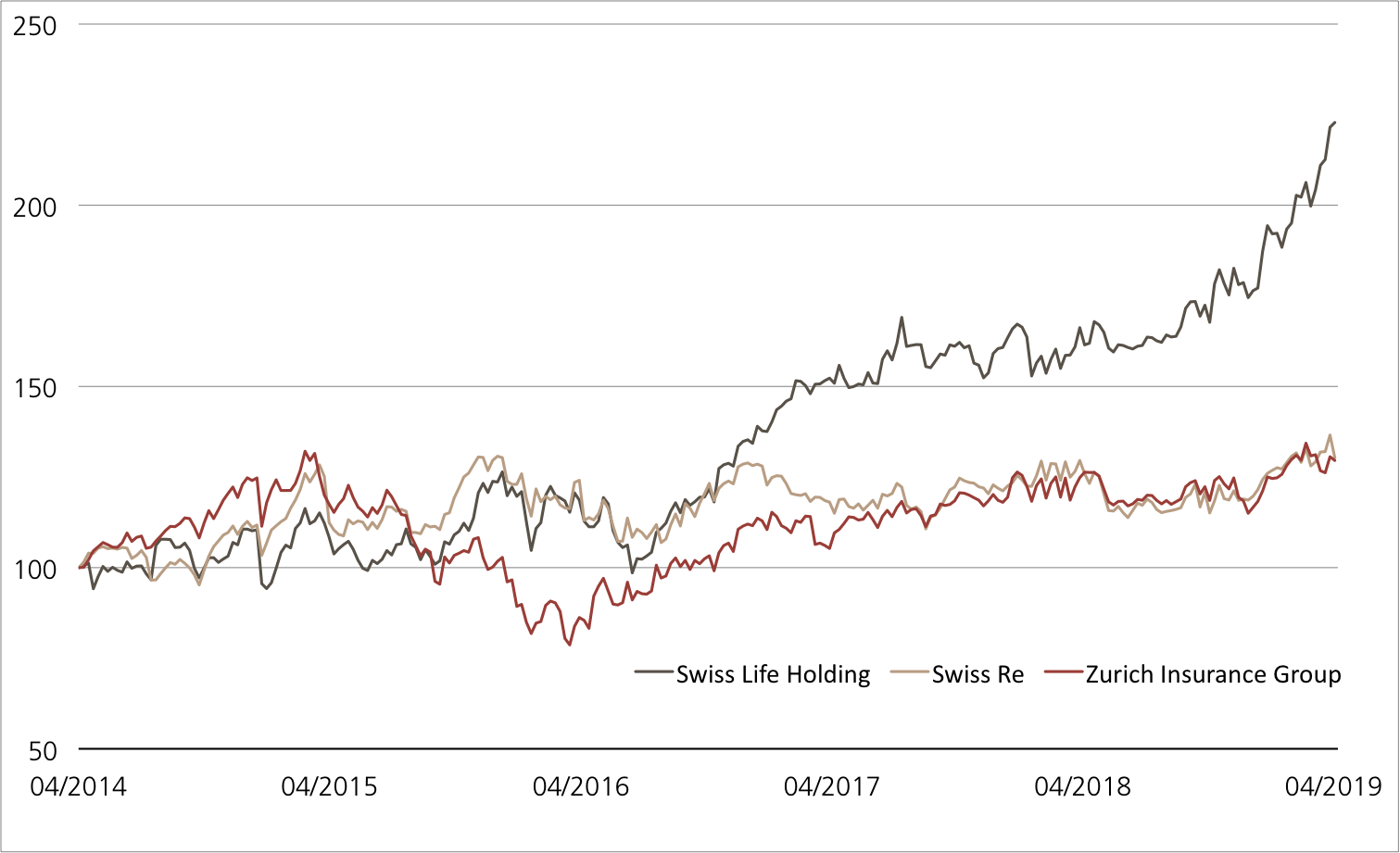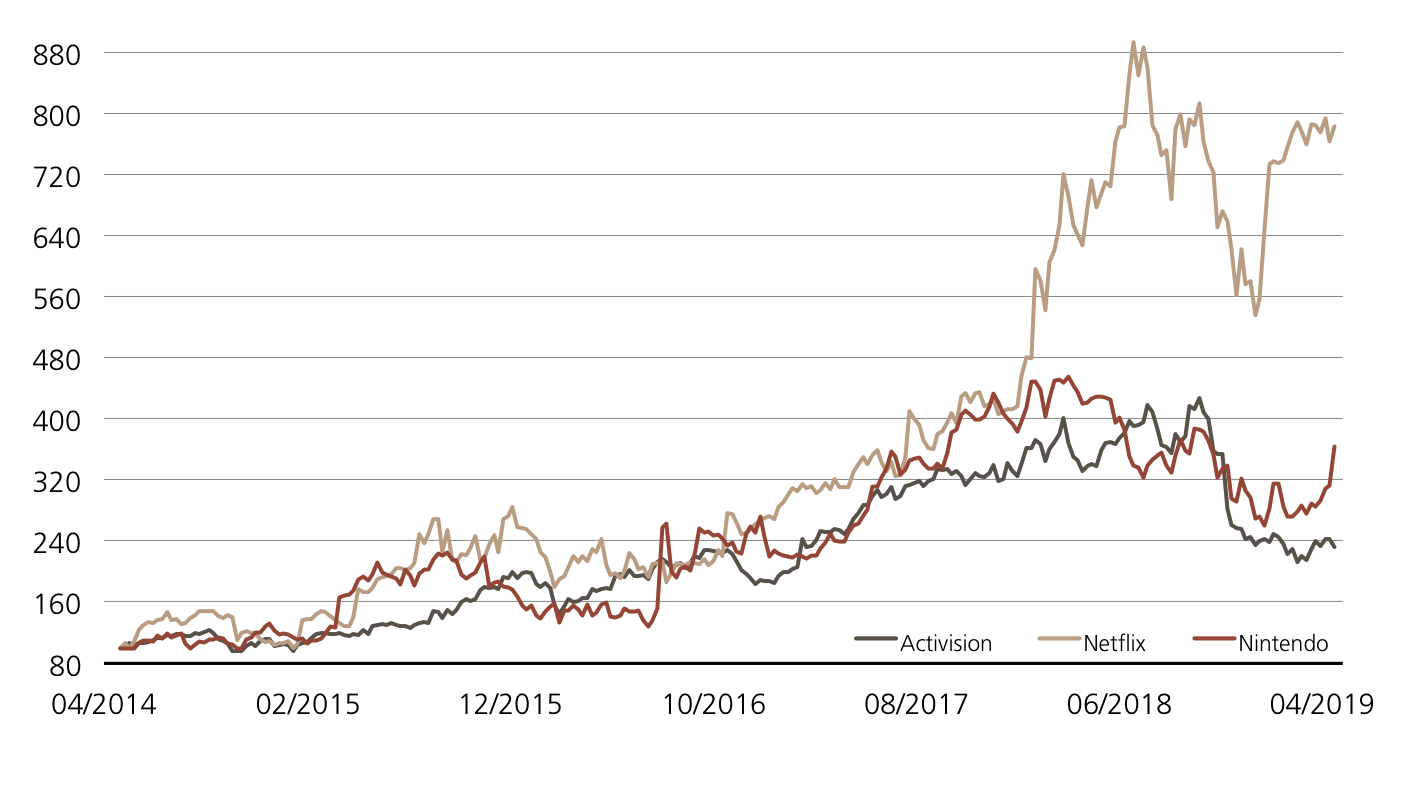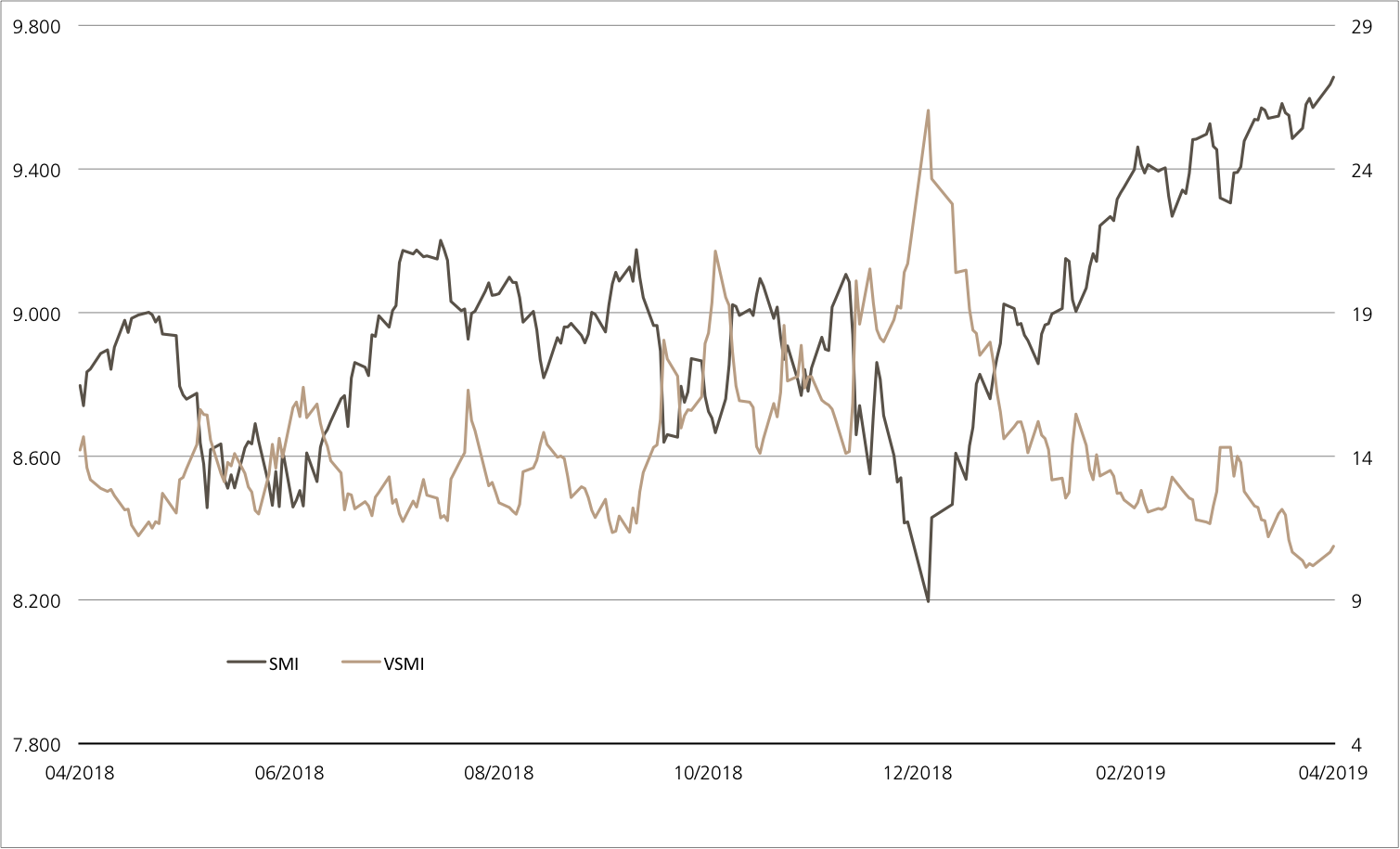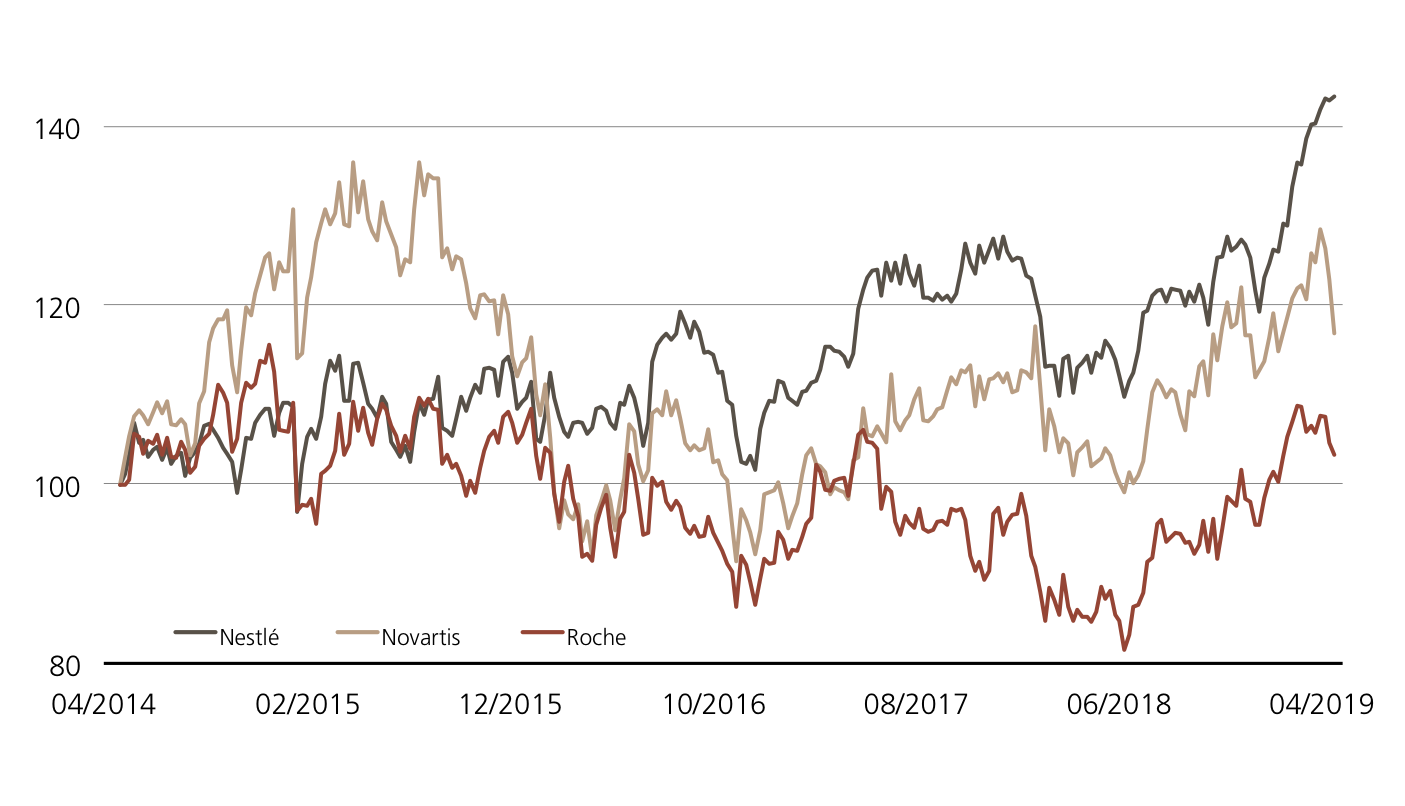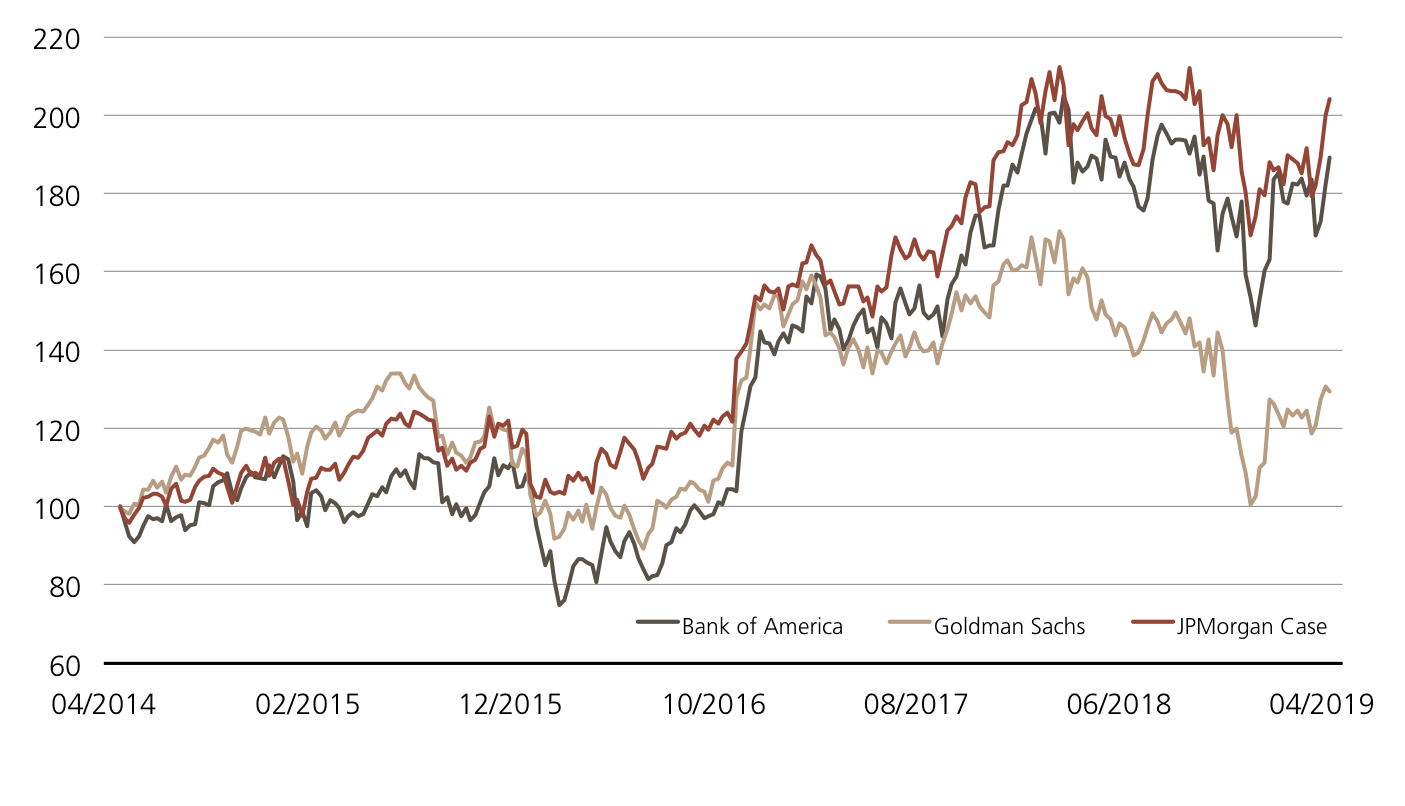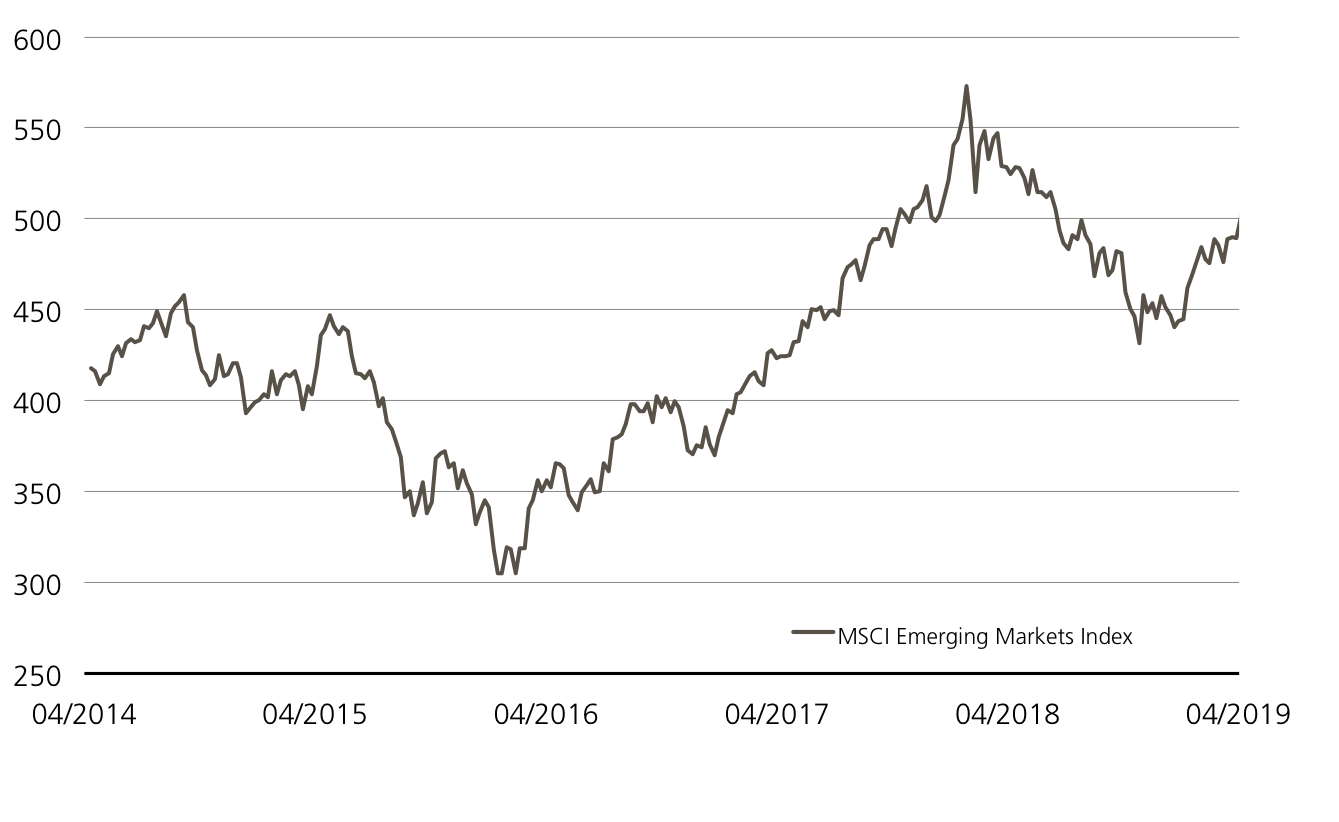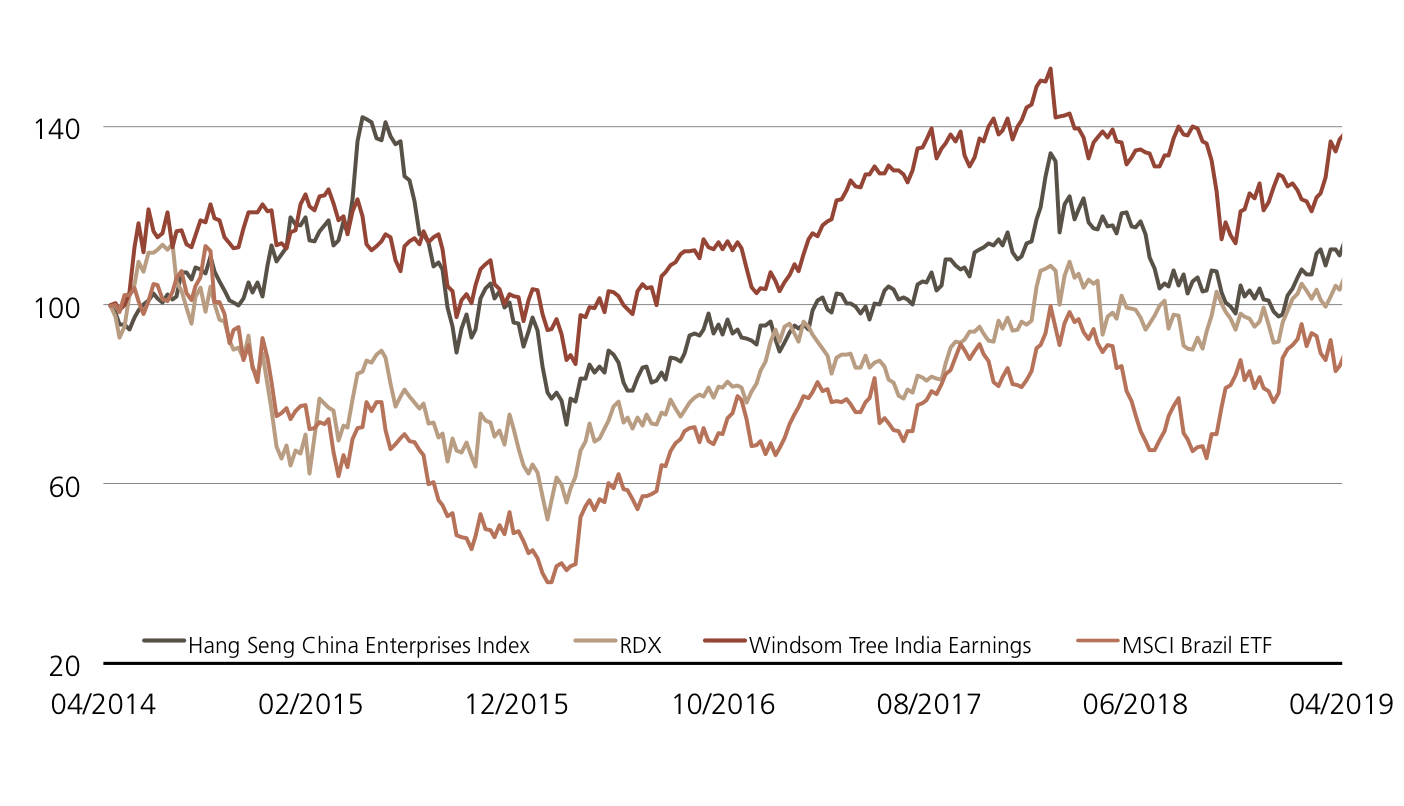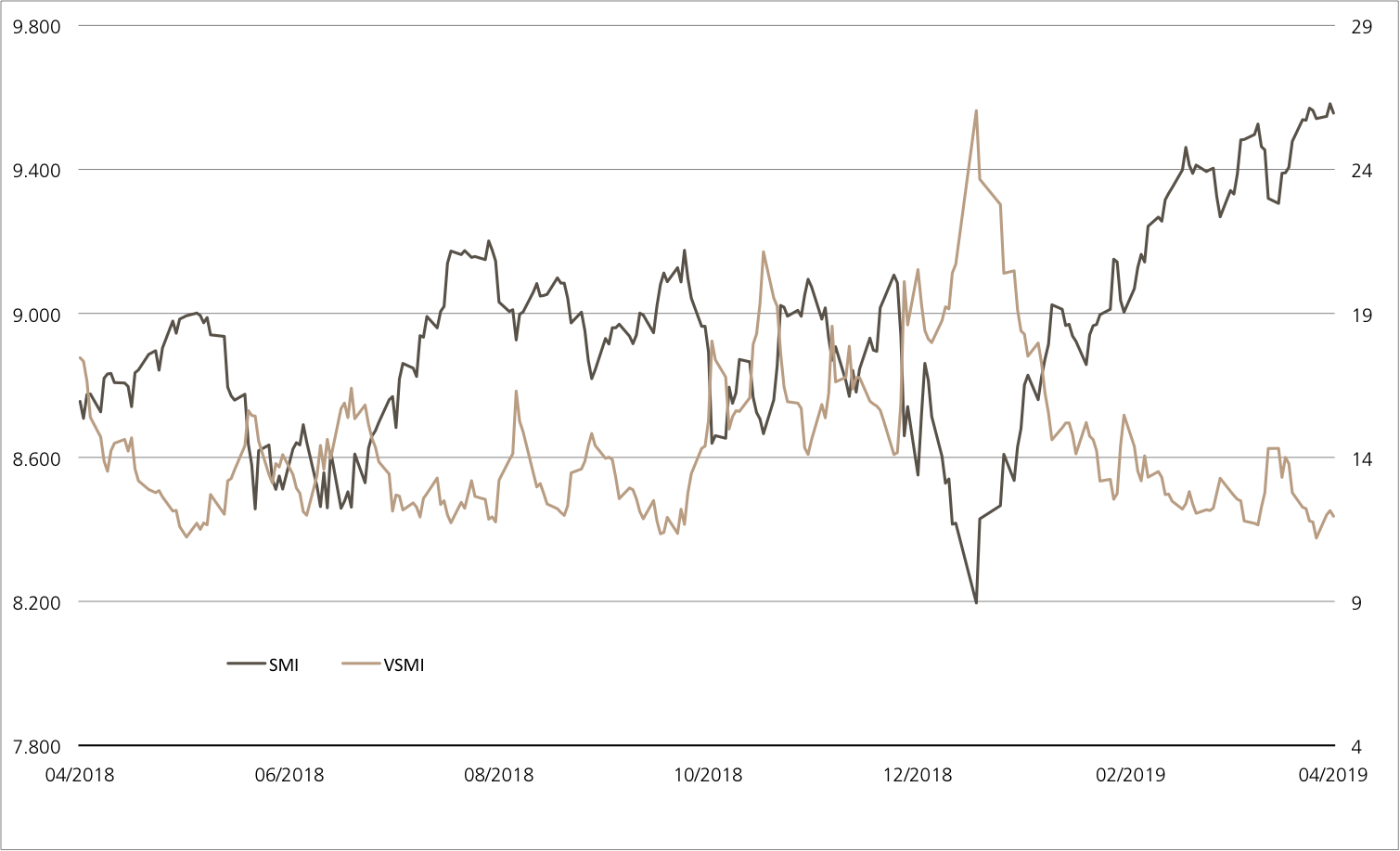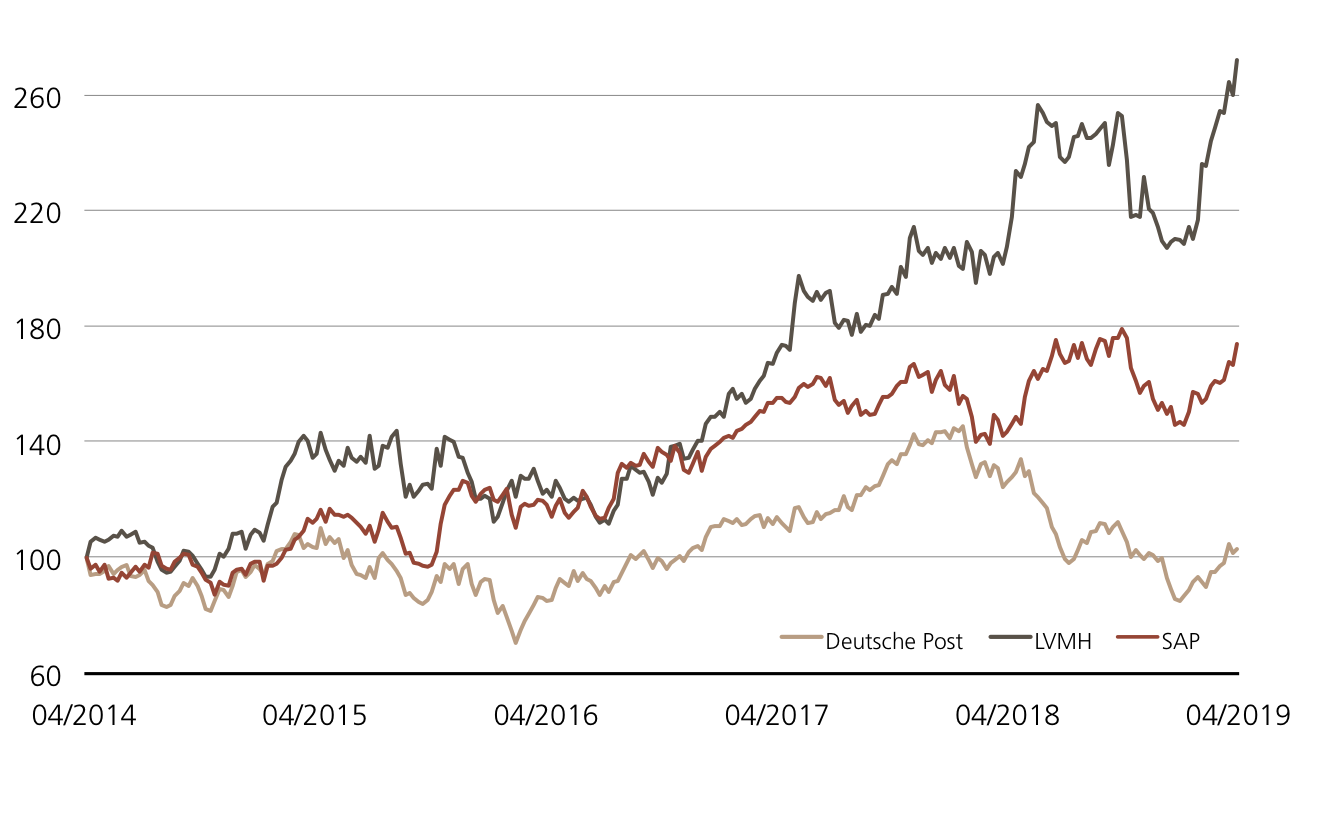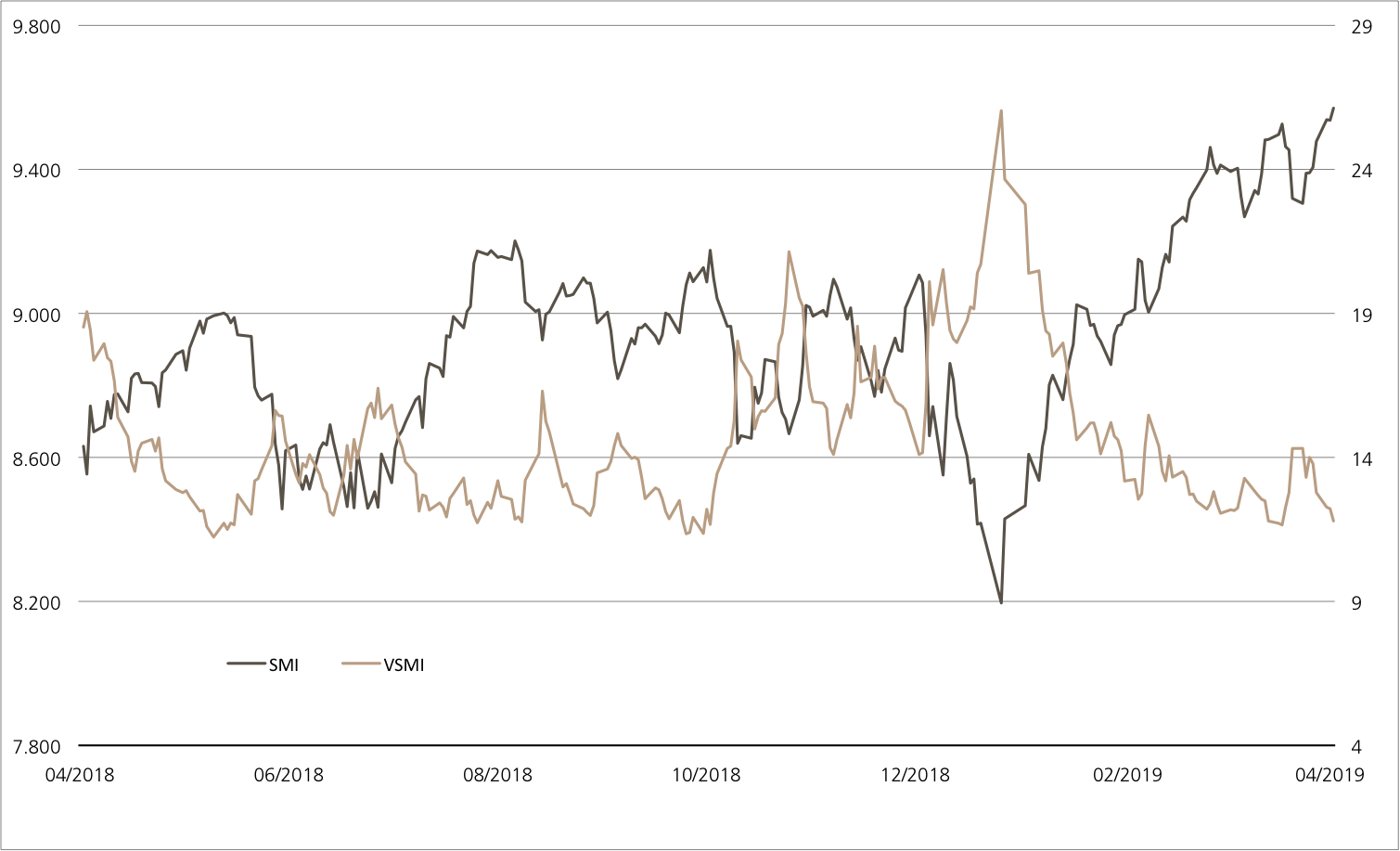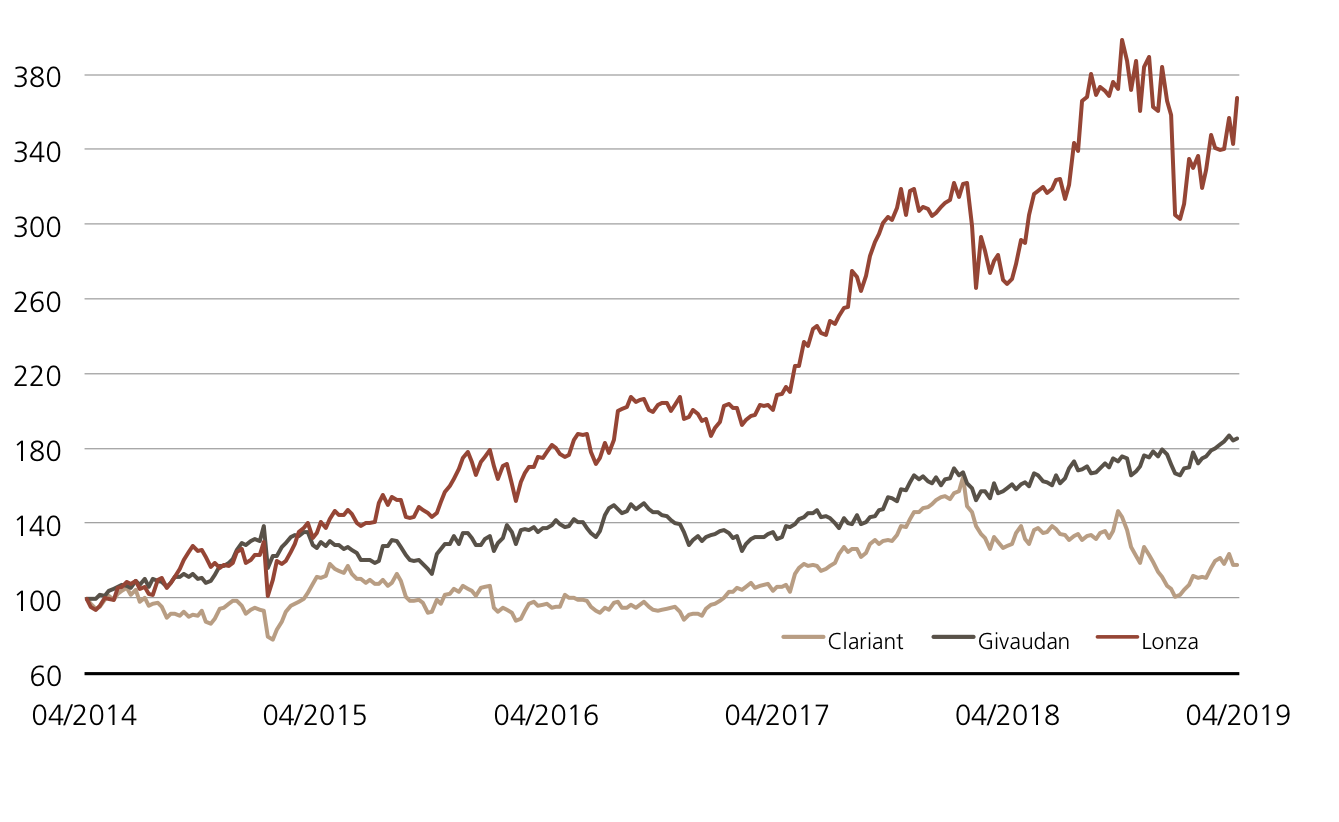Aktienkurse schalten einen Gang hoch
7. Mai 2019 – UBS Wochenkommentar Rück-/Ausblick
Aktienkurse schalten einen Gang hoch
Ein Blick auf den Wetterverlauf der vergangenen Wochen zeigt, dass die alte Volksweisheit «April April, der weiss nicht was er will» durchaus seine Berechtigung hat. Mitten im Monat gab es nach einer frühsommerlichen Phase plötzlich in mehreren Kantonen ein weisses Spektakel. An der Börse war der Verlauf dagegen deutlich geradliniger. Der SMI zog um exakt drei Prozent an und markierte ein neues Allzeithoch bei 9’786 Punkten.*
Hohe Beschleunigung
Zu neuen Rekorden reichte es zwar bei den Pendants DAX und EURO STOXX 50 nicht, allerdings schlug das Index-Duo ein noch deutlich höheres Tempo an. Der DAX kam im April um 7.1 Prozent voran, das europäische Leitbarometer um 4.9 Prozent. Aus Branchensicht stahlen allerdings die Auto-Aktien allen anderen die Show. Der kriselnde Sektor setzte nämlich zum «U-Turn» an. Mit einem Anstieg um 9.3 Prozent zeigte der EURO STOXX Automobiles & Parts Index in den vergangenen vier Wochen die höchste Beschleunigung aller EURO STOXX-Sektoren.*
Unter den Top-Werten war auch Branchenschwergewicht Daimler mit einem überdurchschnittlichen Plus von 11.7 Prozent zu finden.* Und das, obwohl der Auto-Konzern im ersten Quartal nicht überzeugen konnte. Die Deutschen bekräftigten allerdings ihr Ziel, Absatz, Umsatz und Ergebnis 2019 leicht zu steigern. Besser lief es dagegen bei Volkswagen, die Wolfsburger konnten den Umsatz sowie den bereinigten Betriebsgewinn in den ersten drei Monaten überraschend stark steigern. (Quelle: Thomson Reuters, Medienbericht, 02.05.2019) Der dritte deutsche Autohersteller, BMW, wird seinen Zwischenbericht wiederum erst am Dienstag, 7. Mai, vorlegen. Der Analystenkonsens geht von einem Umsatz in Höhe von 22.1 Milliarden Euro sowie einem bereinigten Ergebnis vor Zinsen und Steuern von 1.75 Milliarden Euro aus. Beide Werte liegen unter den Vorjahresgrössen. (Quelle: Thomson Reuters, Earnings Polls, 02.05.2019)
Investieren mit oder ohne «Airbag»
Wer in eine weitere Aufwärtsfahrt der Auto-Aktien investieren möchte, kann den ETT (Symbol: ETAUT) auf den STOXX Europe 600 Automobiles & Parts EUR Net Return Index ins Auge fassen. Das Produkt spiegelt die Kursentwicklung des Basiswertes 1:1 wider. Obwohl die Netto-Dividenden der Indexmitglieder berücksichtigt werden, fällt aktuell keine Verwaltungsgebühr an.** Mit komfortablen «Airbag» lässt sich die Branche ebenfalls ins Portfolio aufnehmen. Der bis 8. Mai in Zeichnung stehende Callable Worst of Kick-In GOAL (Symbol: KDMSDU) auf Daimler, BMW und Volkswagen stellt, bei einem Risikopuffer von 45 Prozent, einen Coupon von 7.25 Prozent p.a. in Aussicht.
Quartalsberichte weiter im Fokus
Aber nicht nur BMW wird in der neuen Woche seine Bücher offenlegen, die Bilanzsaison ist weiterhin in vollem Gange. Aus dem Autosektor stehen am Dienstag ebenfalls die Zahlen von Ferrari an. Aus dem SMI kommen in dieser Woche noch Daten von Adecco, Zurich Insurance und Swiss Life, aus dem SMIM wird unter anderem der Zwischenbericht von OC Oerlikon erwartet. Marktteilnehmer gehen im Durchschnitt von einem Erlös und operativen Ergebnisanstieg von Januar bis März von 5.6 Prozent aus. (Quelle: Thomson Reuters, Earnings Polls, 03.05.2019) Daneben lädt Nestlé noch zu seinem Kapitalmarkttag ein.
In den USA wird es dagegen allmählich überschaubarer. Nur noch einzelne Unternehmen wie AIG, Lyft oder auch Walt Disney berichten über das vergangene Quartal. Von konjunktureller Seite ist in Übersee ebenfalls nahezu Ebbe. Einzig die Erzeuger- und Konsumentenpreisen im April sowie die Erstanträge auf Arbeitslosenhilfe werden erwartet. Der Arbeitsmarkt steht auch hierzulande im Fokus, am Mittwoch wird das SECO, das Staatssekretariat für Wirtschaft, die aktuelle Arbeitslosenquote veröffentlichen.
STOXX Europe 600 Automobiles & Parts (5 Jahre)*
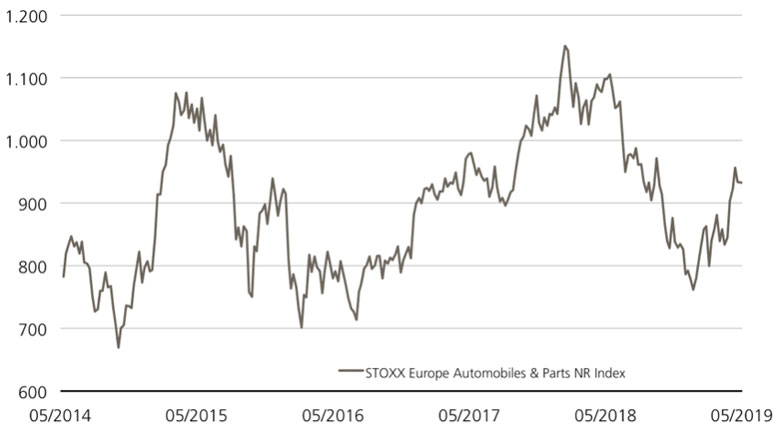
Quelle: Thomson Reuters, 06.05.2019
*Bitte beachten Sie, dass vergangene Wertentwicklungen keine Indikationen für künftige Wertentwicklungen sind.
** Die Konditionen der ETTs werden jährlich überprüft und können mit einer Frist von 13 Monaten nach Bekanntgabe angepasst werden.
Wichtige Termine aus Wirtschaft und Unternehmen
| Datum | Uhrzeit | Land | Unternehmen |
| 07.05.2019 | – | CH | OC Oerlikon, 1. Quartal |
| 07.05.2019 | – | CH | Nestlé, Kapitalmarkttag |
| 07.05.2019 | 07:00 | DE | BMW, 1. Quartal |
| 07.05.2019 | – | CH | Adecco, 1. Quartal |
| 07.05.2019 | – | CH | Ferrari, 1. Quartal |
| 07.05.2019 | 22:00 | US | Lyft, 1. Quartal |
| 08.05.2019 | – | CH | Arbeitslosenquote |
| 08.05.2019 | – | US | Walt Disney, 1. Quartal |
| 09.05.2019 | – | CH | Zurich Insurance |
| 09.05.2019 | – | CH | Swiss Life, 1. Quartal |
| 09.05.2019 | 14:30 | US | Erzeugerpreise |
| 09.05.2019 | 14:30 | US | Erstanträge Arbeitslosenhilfe |
| 10.05.2019 | 14:30 | US | Verbraucherpreise |
Quelle: Thomson Reuters
Weitere Blogeinträge:
Startschuss in die Jahresendrallye?
Follow us on LinkedIn 06. November 2023 Startschuss in die Jahresendrallye? Mehr als 50 Minuten war Jerome Powell am vergangenen Mittwoch, 1. November 2023, im Presseraum der US-Notenbank zugegen. [...]
Showreife Wachstumszahlen
Follow us on LinkedIn 30. Oktober 2023 Showreife Wachstumszahlen Taylor Swift kommt in die Schweiz. Am 9. und 10. Juli 2024 tritt die Pop-Ikone im Zürcher Letzigrund auf. Schon [...]
Trio drückt die Stimmung
Follow us on LinkedIn 23. Oktober 2023 Trio drückt die Stimmung Alles andere als positiv ist der Start in die heisse Phase der Schweizer Berichtssaison verlaufen. Mit [...]


